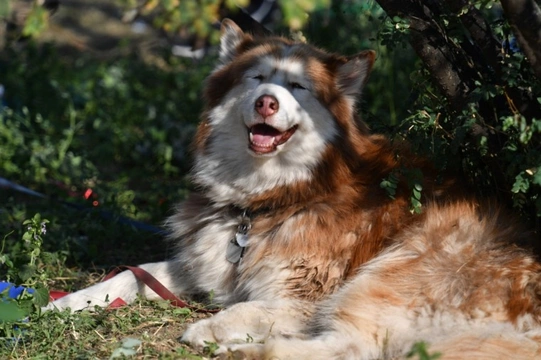
Do dogs sweat?
When the weather is hot or we’re working hard or pushing ourselves with exercise, we humans sweat. This can be an annoyance but is of course necessary to ensure we don’t overheat, and is just one of our body’s systems for taking care of us and keeping us well and healthy.
In fact, disorders that cause people to produce little to no sweat can be a real problem, as sweating is necessary in order to allow our bodies to regulate their temperatures effectively.
Aside from people who have such disorders or health conditions, we all know how it feels to sweat, and can see (and smell!) sweat sometimes on ourselves and others; but what about dogs? Do dogs sweat? If you think about it, you’ll realise you won’t have observed (or smelled) sweat on a dog, even when they’re really hot or have been exercising hard.
So, do dogs sweat? Yes, but not like we do! This article will tell you more about whether or not dogs sweat, how useful this is to them, and other interesting facts about dogs and sweating. Read on to learn more.
Do dogs sweat?
Yes, dogs sweat, but the type of sweat that helps to cool them down is only produced by one area of the body. This is the pads of the paws. The paw pads are of course hairless in all dogs, including those with the thickest, heaviest coats of all. However, the sweat produced by your dog’s paws is only negligible in quantity.
Dogs don’t sweat the type of sweat that cools them down from any other areas of their bodies; but they do produce a different type of sweat from other areas.
Do dogs sweat like humans?
No, how dogs sweat, where they sweat from, and how effective their sweating is – and even the type of glands that produce dog sweat – are very different for dogs versus people.
There are two types of glands that dogs have to produce sweat, called the apocrine glands and the merocrine glands respectively.
The merocrine glands are present on the pads of your dog’s paws, and these function in a similar way to the sweat glands of humans, which we use to cool down. They cause the dog’s paws to sweat as a response to their bodies being overly warm, as part of the body’s reaction to being too hot, to cool the dog down.
You may see evidence of this if your dog walks across a flat reflective surface (like a tiled floor) on a hot day, leaving paw print imprints that evaporate quickly in their wake.
Sweat glands for cooling rely on the evaporation of the water produced in order to achieve the desired cooling effect, and so cooling sweat glands under your dog’s furry areas would serve no purpose, as the water released would not evaporate effectively.
The apocrine sweat glands on dogs are located all across their bodies, under the fur. However, the type of sweat they produce is not useful for cooling, and not prolific enough to make your dog feel damp when they’re hot.
We’ll cover what apocrine gland sweat does for dogs in a moment.
Does sweating through the paws cool your dog down like sweating does for people?
Sweating through the paws helps to serve the dog’s systemic response to heat and works with their other body systems to contribute to cooling. However, while for people, sweating is the main way we stay cool, this is only a very minor part of the equation for dogs.
Dogs largely cool down by means of panting and drinking water, and supporting this by things like reduced activity, staying in the shade, and seeking out cooler areas.
What’s the point of the sweat glands on the dog’s body if they aren’t useful for cooling?
The apocrine sweat glands across your dog’s body don’t help to cool them down, but they do serve another very important function for dogs. As you’re no doubt aware, dogs have a sense of smell that is far better than that of us people, and they can smell things we can’t even detect, and communicate with each other by means of scent.
In fact, the sense of smell is the dog’s most acute sense, and the one they rely upon the most heavily. So, those apocrine sweat glands in dogs – what’s the deal? Well, apocrine glands fulfil the description of being sweat glands in the technical sense of the word in terms of what they do, but their main purpose is not to release moisture from the surface of the skin, but pheromones.
Pheromones are a type of naturally occurring hormonally-produced chemical that creates a unique signature scent (which dogs can detect but people cannot, or at least not consciously) that dogs use as part of their communications with other dogs.
They let dogs identify each other by smell and can even give a whole host of other information on greetings too, like what sort of food the dog last ate, if they’re healthy, their gender, and much more. This means apocrine gland sweat is a really important part of your dog’s bodily responses, but that sweat serves a rather different purpose for dogs than it does for people.



